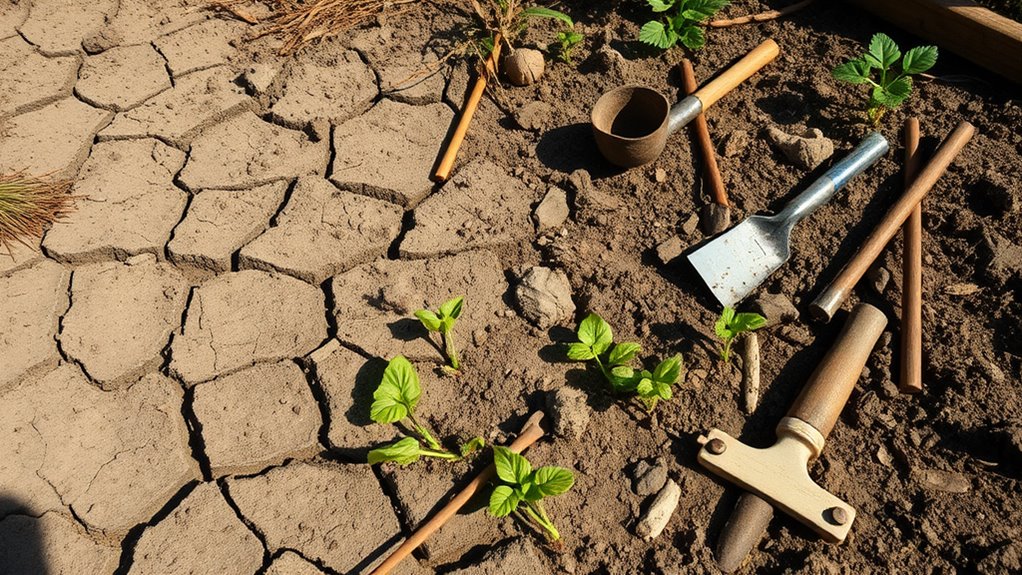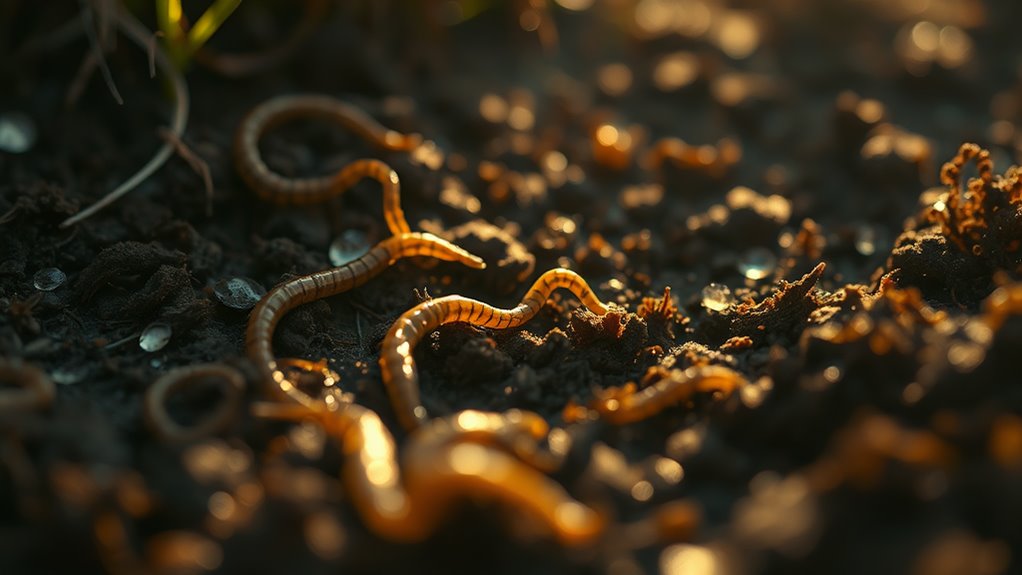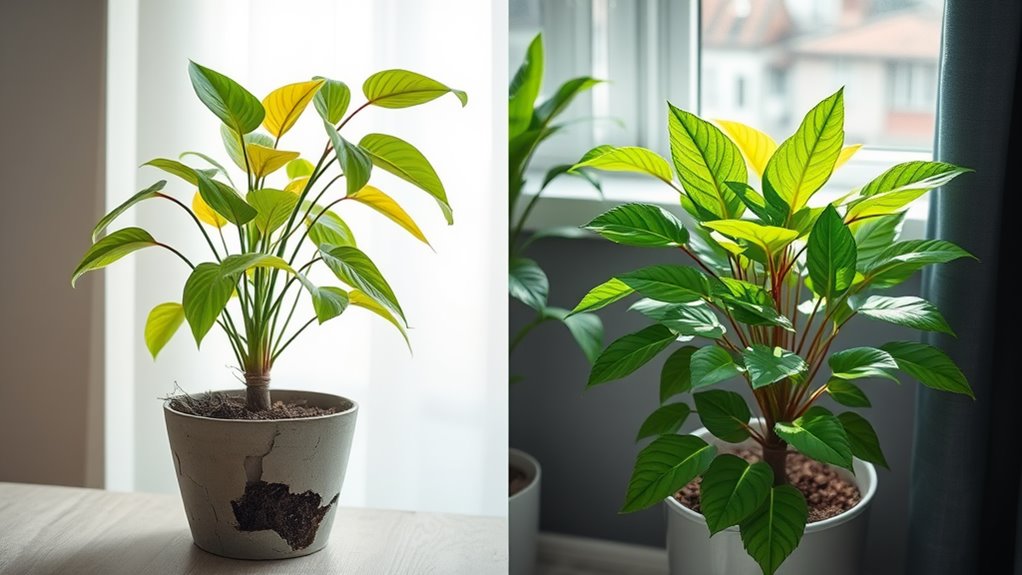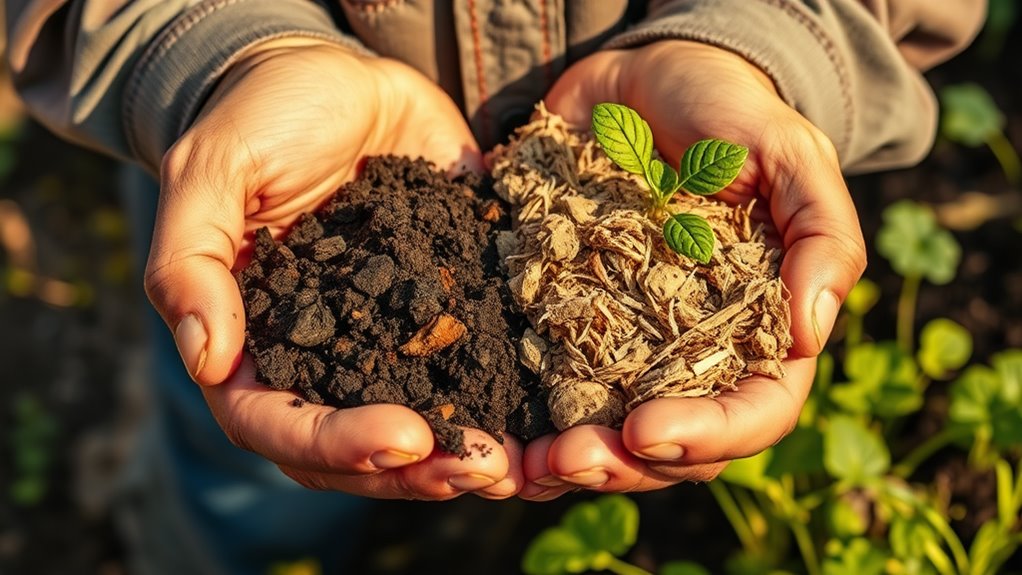Why Most Gardeners Fail Before They Even Start
You often overlook key steps like testing your soil or matching plants to your climate, dooming your garden before it starts. You’ll underestimate the time for maintenance, skip watering plans, or ignore essential tools and supplies, leading to frustration. Neglecting pests, budgets, and effort only worsens the outcome. Tackle these pitfalls early, and you’ll build a thriving space—explore more strategies to ensure your success.
Key Takeaways
- Overlooking soil testing and preparation results in nutrient-poor soil and poor plant growth.
- Selecting plants that don’t match the local climate and soil conditions leads to early failure.
- Underestimating the time and effort required causes gardens to become overwhelming and neglected.
- Neglecting a proper watering and irrigation plan leaves plants vulnerable to drought or disease.
- Ignoring essential tools, supplies, and budget needs strains resources and hinders progress.
Overlooking Soil Preparation
When you overlook soil preparation, you’re setting your garden up for failure right from the start.
As one of the most common beginner mistakes, skipping soil testing and amendment leaves you with compacted, nutrient-poor earth that stifles root growth and invites diseases.
Instead, test your soil’s pH and texture first; then, mix in compost or organic matter to improve drainage and fertility. Moreover, conducting soil pH testing helps in identifying and remedying potential issues for better plant health.
You’ll boost plant vitality and yields by ensuring a strong foundation.
Furthermore, soil testing plays a key role in enhancing plant health and increasing crop yields for better overall garden success.
Ignoring Climate and Location Factors
You’ve ignored climate and location factors, such as climate zone errors, which often doom your garden before you even start planting.
This means you’re choosing plants that can’t thrive in your specific temperatures, rainfall, or soil conditions, leading to poor growth or total failure.
Now, let’s explore how you can match your garden plans to these essential elements for better results. Additionally, by incorporating seasonal gardening tips from practical experiences, you can prepare for unpredictable weather challenges to protect your crops.
To enhance your success, consider implementing essential seasonal strategies to maintain a vibrant garden throughout the year.
[LIST OF 2 SUBHEADING DISCUSSION POINTS IN ENGLISH
While gardeners often overlook basic practices, two key issues frequently lead to failure: improper watering techniques, which can drown roots or cause dehydration, and inadequate pest control, leaving plants vulnerable to infestations.
To succeed, you must address these head-on.
-
You’ll water correctly by checking soil moisture first, avoiding over- or under-watering that stresses roots.
-
Use integrated pest management; inspect plants weekly to catch infestations early.
-
Apply organic controls like neem oil promptly, as pests multiply fast if ignored.
-
Rotate crops annually to disrupt pest cycles, keeping your garden healthier overall.
Climate Zone Errors
Gardeners often fail by ignoring their local climate zones, which leads to planting species that can’t thrive in the wrong temperatures or soil conditions.
You must research your USDA hardiness zone first, using online maps or local resources, to match plants to your area’s average winter lows and rainfall patterns.
For example, if you’re in a cold zone like 4, skip heat-loving exotics like hibiscus that won’t survive freezes.
Consider microclimates too—shaded spots differ from sunny ones—and test soil pH for compatibility.
This practical step prevents wasted effort, ensuring your garden flourishes with resilient, well-adapted plants.
Skipping Thorough Plant Selection
One of the biggest pitfalls in gardening is skipping a thorough plant selection process, which sets you up for avoidable failures.
You’re choosing plants that won’t survive your specific conditions, leading to wasted time and resources. Take time to assess your garden’s unique needs first. Utilizing step-by-step guidance can help streamline this process.
-
Match plants to your climate and soil: Select species suited to your zone to avoid poor growth or death.
-
Consider sunlight and water requirements****: Pick plants that align with your garden’s light and moisture levels for better health.
-
Evaluate growth habits****: Choose sizes and spreads that fit your space, preventing overcrowding or gaps.
-
Check for pest resistance****: Opt for hardy varieties that resist common local issues, reducing future interventions.
To enhance your gardening success, remember that soil preparation plays a vital role in supporting the plants you select.
Neglecting Essential Tools and Supplies
You often undermine your gardening success by overlooking basic tools like shovels and pruners, which are crucial for efficient work. In addition, seasoned gardeners emphasize the top five must-have tools to ensure optimal garden performance.
Ignoring essential supplies such as quality soil or fertilizers leaves your plants vulnerable to poor growth.
Forgetting key equipment, like watering cans or gloves, makes routine tasks frustrating and ineffective.
To enhance your setup without overspending, explore seven affordable tools that deliver great value and performance.
Overlooking Basic Tools
While basic tools like a sturdy trowel, pruning shears, and quality gloves form the backbone of successful gardening, neglecting them often derails even the most enthusiastic efforts. You can’t dig, trim, or protect your hands effectively without these essentials, leading to frustration and poor results.
-
You’ll injure yourself: Without gloves, thorns and blisters turn gardening into a painful chore.
-
Tasks take longer: A dull trowel slows planting, wasting your time and energy.
-
Plants suffer: Poor pruning with inadequate shears damages growth, inviting disease.
-
Motivation drops: Struggling without proper tools makes you abandon projects early.
Ignoring Essential Supplies
Gardeners who skip key supplies beyond basic tools set themselves up for avoidable setbacks.
You overlook essentials like quality soil, seeds, and fertilizers at your peril, as these form the foundation for plant health. Without nutrient-rich soil, your plants struggle to thrive, leading to stunted growth or disease.
Don’t forget mulch for moisture retention or organic pest deterrents to ward off invaders early.
Prioritize sourcing these items before planting; you’ll save time and frustration. By investing wisely, you turn potential failures into flourishing gardens, ensuring a robust start to your gardening journey.
Forgetting Key Equipment
Neglecting key equipment, such as reliable tools and protective gear, sets gardeners up for preventable pitfalls.
You’ll waste time, risk injury, and compromise your garden’s health if you overlook these basics, turning simple tasks into frustrating ordeals that derail your efforts from the start.
-
Without sturdy gloves, you’ll expose your hands to cuts, thorns, or chemicals, leading to painful setbacks.
-
Forgoing a quality trowel means digging and planting become inefficient, causing sloppy results and fatigue.
-
Skipping a proper watering can results in uneven moisture, stressing plants and inviting disease.
-
Lacking pruning shears leaves overgrowth unchecked, making maintenance overwhelming and reducing your garden’s yield.
Underestimating Time and Effort Needs
One common pitfall is that you underestimate the time and effort gardening truly demands, leading to overwhelmed plans and disappointing results.
You might think planting a few seeds is quick, but soil preparation, weeding, and pest control add up, often taking hours weekly.
To succeed, assess your schedule honestly—factor in daily tasks and seasonal peaks like harvesting.
Break projects into small, achievable steps, and track your energy levels to avoid burnout.
Remember, consistent effort builds a thriving garden; rushing sets you up for failure.
Don’t overlook these realities for long-term satisfaction.
For example, many beginners fail to account for soil preparation, which is crucial for healthy plant development.
By using innovative time-saving tools, you can significantly reduce the hours spent on tasks like weeding and pest control.
Forgetting Watering and Irrigation Plans
Another oversight that compounds the challenges of underestimating effort is forgetting to plan your watering and irrigation, which can leave plants parched and vulnerable.
Without a strategy, you’ll waste time fixing thirsty plants, leading to weak growth and higher failure rates. Proper planning ensures your garden thrives efficiently. Incorporating watering timing strategies can optimize plant growth and minimize water usage effectively.
-
Assess water needs upfront: Evaluate soil type, plant requirements, and local climate to prevent dehydration or root rot.
-
Choose the right system: Select drip irrigation or soaker hoses for targeted watering, saving water and reducing effort.
-
Schedule wisely: Set routines based on weather and plant cycles, using timers to maintain consistency without daily checks.
-
Monitor and adapt: Regularly test soil moisture and adjust plans to handle dry spells or heavy rain effectively.
Embracing expert watering techniques can help prevent common mistakes and ensure your garden flourishes.
Disregarding Pest and Disease Prevention
While pests and diseases might seem like minor threats, disregarding prevention in your garden invites rapid infestations that weaken plants and derail your efforts.
To avoid this, you must prioritize early detection and control. Start by selecting resistant plant varieties and fostering biodiversity through companion planting.
Regularly scout for pests like aphids or diseases such as mildew, using simple tools like magnifying glasses. Apply preventive tactics, such as barriers or natural sprays, and maintain clean tools to limit spread.
Misjudging Budget and Cost Implications
Misjudging your garden’s budget can quickly turn a promising project into a costly disappointment, as overlooked expenses pile up and strain your resources.
You’ll often underestimate hidden costs that add up fast, leaving you scrambling for funds. To avoid this, plan meticulously from the start.
-
Underestimate initial purchases****: You might forget quality soil, seeds, or plants, inflating your total spend.
-
Ignore tools and equipment****: Basic items like gloves or hoses add up if you don’t budget for them upfront.
-
Overlook ongoing costs****: Watering, fertilizers, and minor repairs can surprise you monthly.
-
Neglect seasonal factors: Prices fluctuate, so you could face higher costs for off-season materials.
Failing to Create a Maintenance Schedule
Failing to create a maintenance schedule leaves your garden vulnerable to neglect, as weeds overrun beds and plants suffer from inconsistent care.
You can’t just plant and forget; instead, map out weekly tasks like watering, pruning, and pest checks to keep everything thriving. Use a digital calendar or notebook for reminders—it’s practical and prevents burnout.
By scheduling seasonal adjustments, such as mulching in fall or deadheading in summer, you’ll foster healthier growth and catch issues early.
This proactive approach saves time, reduces stress, and turns your garden into a sustainable success.





